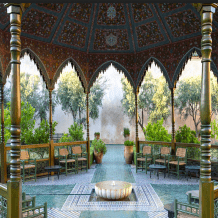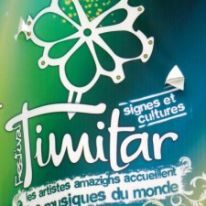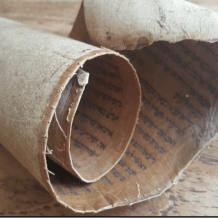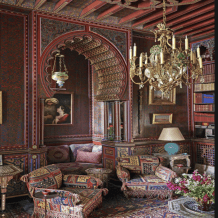What are the Best Things To Do In Fes El Jdid?
Exploring Fes el Jdid, the “new old medina” is essential when planning a trip to Morocco. Historically, the city of Fes was the intellectual and artistic capital. Fes is a UNESCO World Heritage site and is located northern inland with a population of over 1.4 million. It was once the crossroads for the Transaharan Route during the 17th and 18th centuries; the city is protected by high grounds and entered by the river of Fes. The ancient city of Fes was built under the Idrisids rulers during the 8th and 9th century and its character was shaped when 2000 Arab families migrated to Fes.
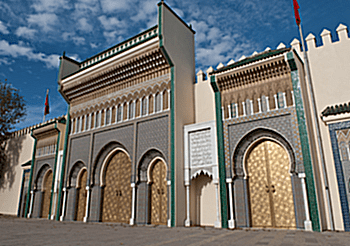
Fes was originally founded under the Marinid’s in the 13th century and replaced Marrakech as the new kingdom. Until the 11th century, Fes saw many rulers like Almoravid Sultan Yusuf Ibn Tashfin; under the Almoravid rule and became recognized as a spiritual, scholarly, and mercantile city. Over the centuries Fes continued to prosper and between 1170-1180, it was home to 200,000 people, amassing one of the largest populations in the world during that time. Fes also regained status as Morocco’s capital with the rising of architectural buildings like madrasas (secular schools), mosques, zawiyas (monasteries), and city gates. To this day many of Fes’ institutions are key examples of some of the finest Islamic architecture in the world.
Fes is a UNESCO World Heritage site and is located northern inland with a population of over 1.4 million.
In 1276, the Marinid sultans founded the Fes el Jdid quarter. Fes el Jdid is considered the “new old medina”. It is one of the three parts of Fes, home to Jewish Mellah, the Royal Palace and the Batha Gardens and Museum. The Fes el-Jdid medina area is smaller than the historically significant Fes el Bali, however, is full of interesting sites and worth taking the time to explore. A guided tour of Fes el Jdid will take you from the Bab Lamar Gate, near the Royal Palace, to the Blue Gate, the entrance to Fes el Bali.
Discovering Fes el Jdid – Top 5 Sites Not to Miss
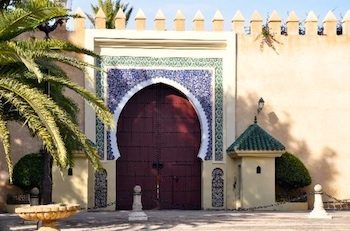
1. The Gates of Fes El Jdid
The perimeter of Fes El Jdid begins at the left-hand corner of the Bab Jdid Gardens, run northwards through the lawns of the Royal Palaces’ Alouite Gardens, continues eastwards towards Avenue del Unesco to Bab Lahdid, and along Avenue del Batha where it touches the Bab Jdid Gardens again.
Bab Lamar
Bab Lamar is also known as Bab Al Amer is a good starting point to begin your tour of the Fes Jdid quarter. Located along the Moulay Yosseff boulevard, you will see a parking lot followed by the entrance for Dar al-Makhzen, the Fes Palais Royale. The Palais Royale covers an area of 800 hectares and was commissioned by an Alaouite sultan. Although only King Mohammed VI can enter the palace, it is still appreciated for its massive ornate brass doors, which are surrounded by zellij tile work and carved cedarwood. We recommend visiting the historical landmark during the morning when the crowds are smaller and then walking across the street to the Mellah.
Bab Semmarine
Built in 1924, Bab Semmarine has two majestic arched gates flanked by two Borj towers, semicircular and multi-lobed horseshoe shapes; geometrical motifs decorate the defensive structure. Bab Semmarine is historically significant for being one of the main branches of the Moroccan Amazighs. It also showcases the architectural finesse of the Merinids. The gate was originally called Oyoune Sanhaja ( Sources of the Sanhaja) and the current name reflects the blacksmith guild which sits next door to Bab Semmarine. Apart from the blacksmiths, you will also find a colorful food market and many souks. The main road is Grande Rue de Fes El Jdid and is the main access street in the El Jdid Medina. The street is planked with bakeries, coffee and textile shops, and mosques. Nex to the gate, the Souk Bab Jiaf is a well-priced place to purchase some children’s clothes or small presents.
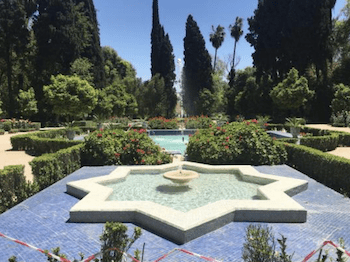
Bab Rifa
Bab Rifa is north of Bab Semmarine and near Palais des Hotes, a prestigious century old traditional Fassie Hotel. Restored in 1944, the hotel is well known for its impressive Islamic interior architecture and treating guests like royalty. Nearby the Palais des Hotes, is the Jardin Jnan Sbil. This garden is appreciated for its tranquility and well-manicured space filled with bamboo trees, herbs, cacti, orange trees, roses, and ponds. The garden is the perfect place to escape from the heat and wind down after exploring the busy Medina. Inside Jnane Sbil Gardens, you will also discover a UNESCO recognized a recently restored water wheel; it is driven by a tributary of the Fes river. Known as Norias, the water wheels were once common in Fes. During the month of June, the garden is used as a part of the Sacred Music Festival.
2. The Jewish Mellah
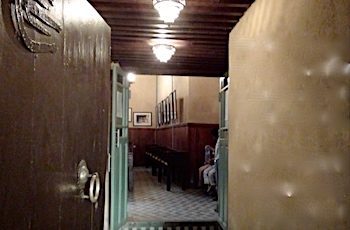
Constructed by Merinide Yacoub Ben Abdelhak in 1276, the Jewish Mellah is the first of its kind in Morocco and was officially protected by the King’s palace against Arab attacks until 1465. It was considered a privilege to live in the Mellah as it had large beautiful quarters with balconies. The word Mellah originates from the nearby river Oued el Mehraz.
Discovering the Jewish Mellah on a walking tour begins at Rue Bou Kssisat (Street Bou Kssisat). During your walk, you may stop for sweets at Cafe Patisserie Agora, located by the Menara Pharmacy where you will notice all streets and some business still have Jewish names. Next visit the Ibn Danan Synagogue, a 17th-century orthodox temple built by Mimoun Ben Sidan. The Synagogue Al Fassiyine is nearby as well and an important part of discovering the Jewish Mellah and its history. Located just behind the Ibn Danan Synagogue, is an active Jewish cemetery. The cemetery houses 13,000 white tombs stretching down a hill; away from Mecca. One of the oldest tombs is of Rabbi Vidal Hasserfaty’s which dates back to 1600.
There is a small Jewish museum near Derb Byron road that houses ancient photographs and objects. To further highlight the important Jewish history of Fes and Morocco, King Mohammed VI has commissioned a larger Jewish museum which is anticipated to open in 2020. The Kingdom’s Fes Medina 2018-2023 Vision is to transform Fes and part of the vision includes the restoration of the Jewish Mellah. While Morocco’s Jewish population has declined since Israel became a state, hundreds of Jewish synagogues, cemeteries, museums, spiritual sites, and cultural centers are spread through Morocco.
Finally, before ending your visit of the Jewish Mellah, don’t miss out on exploring the Kessaria at Bab Magana, where you can find one-of-a-kind silver and gold jewelry along with elaborate home decor pieces.
3. Sacred Music Festival
For 24 years, the Fes Festival of Sacred Music has been leading forums, highlighting artists and music and leading the conversations contributing to building bridges across communities and cultures. The 25th edition of the Fes Festival will take place between June 13th-22nd, 2019. This 10-day celebration held in mid-summer and founded in 1994 by the Moroccan scholar and philanthropist Faouzi Skali. The Fes Festival of Sacred World Music was created to showcase major musical traditions of sacred, spiritual music and world music.
4. Dar Batha Museum & Gardens
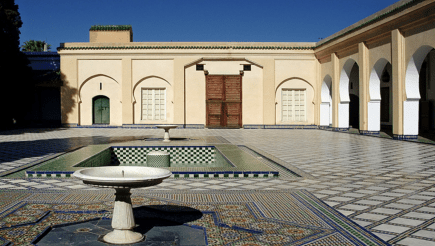
The Bab Rifa area is also the location of the Dar Batha Museum, a former 19th-century Andalusian-style summer palace commissioned by Alaouite Sultan Hassan I and his successor Abdelaziz. In 1961, Dar Batha museum housed 6,000 traditional Moroccan arts and crafts. The museum features objects of carved wood, embroidery, zellige, wrought iron, jewelry, coins, carpets, and above all its collection of ceramics and pottery. Fassi pottery is said to be some of the most beautiful in Morocco. Ceramics from Fes are famous for their shade of blue and have been a Fassi specialty for over 1000 years.
The museum is also known for its astrolabes, astronomical instruments to help calculate time, invented by Hipparchus, a Greek scholar. Throughout Islamic geometric patterns and architecture, star shapes can be detected. Muslims are obliged to pray 5 times a day in the direction of Mecca and it is said the star patterns reflect these traditions. The Batha Museum is temporarily closed until 2020 as part of King Mohammed VI’s vision to renovate and raise global awareness for the UNESCO World Heritage Fes Medina.
5. Moulay Idriss College
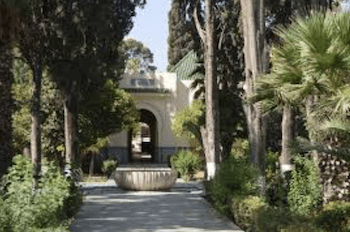
Moulay Idriss College is wedged in the center of the Jnane Sbil Gardens and Bab Boujloud (Blue Gate), the main entrance of Fes El Bali. Built by the architect Canut, the high school holds small classes to prepare the children of some of Morocco’s best families for university. Moulay Idriss College has a rich history. When it’s doors opened in October 1914, after the establishment of the French protectorate, the high school was recorded as Morocco’s first Muslim high school. It was created with the intention of training the future pashas, khalifas, financial agents and judicial officials.
The original location of Moulay Idriss College was in Dar Mnebni, a part of the Fes el Bali medina where General Hubert Lyautey lived when he arrived in Fes. Until 1917, children attended school in the former home of Caid McLean. Moulay Idriss’ current location near the Bab Rifa Gate can be traced to 1917. Today the school collaborates with the Quaraouiyine University where students study law and theology. Quaraouiyine University is a UNESCO certified site and the oldest university in the world.
For more information to Discover Fes el Jdid and Fes el Bali on a Guided Walking Tour


